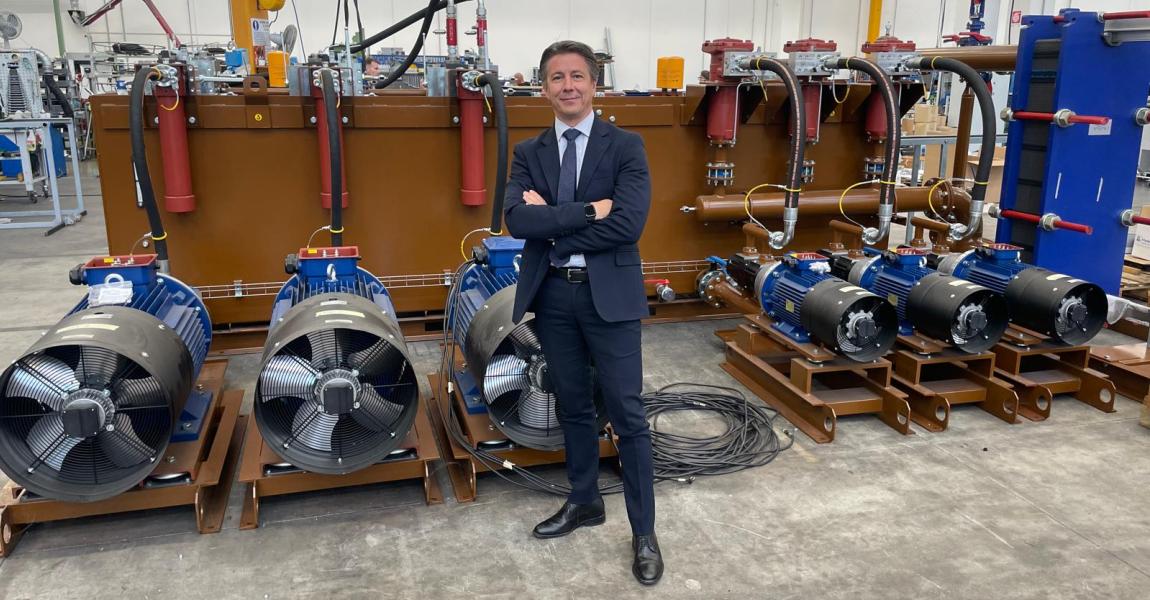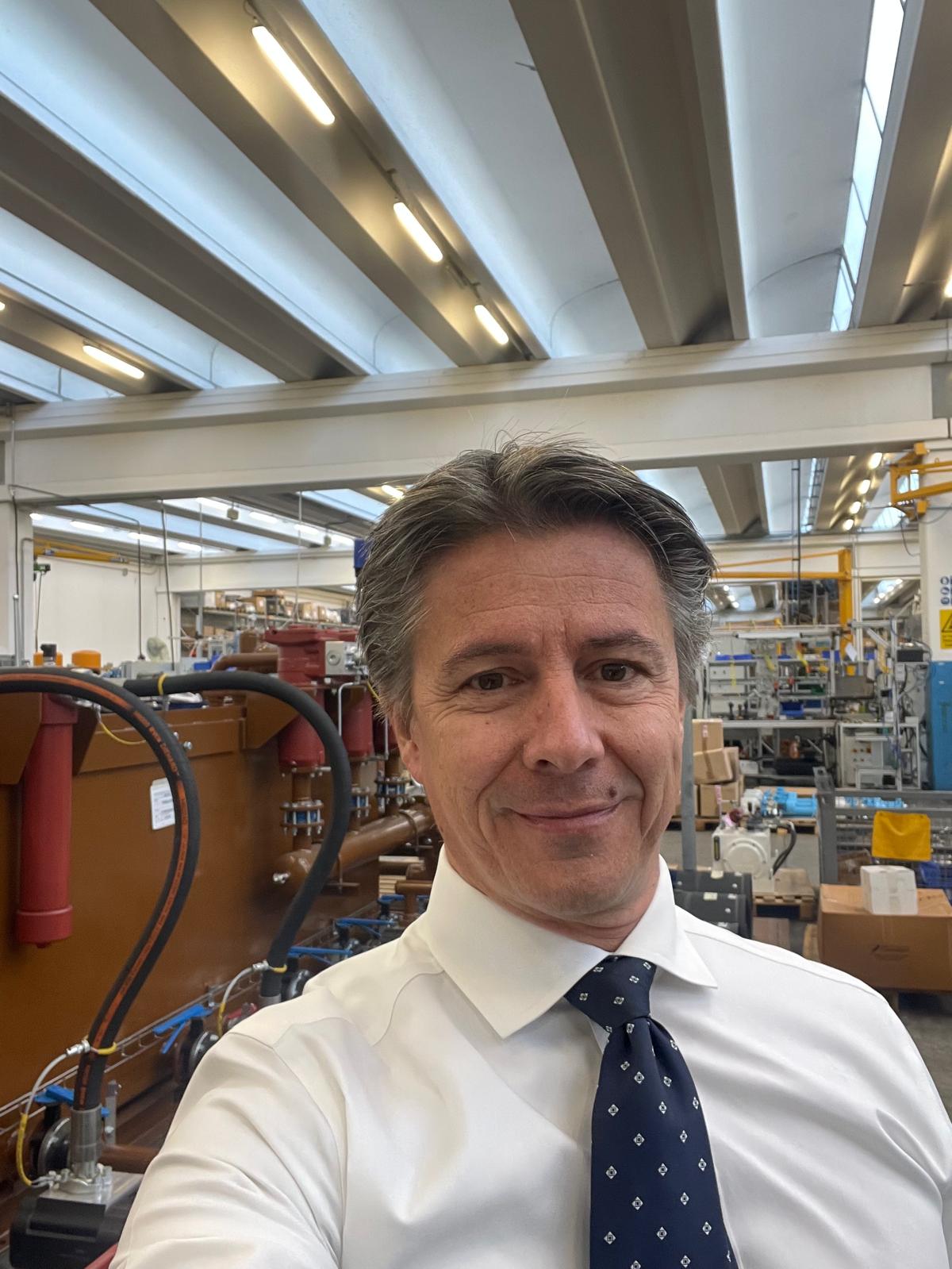
The European hydraulic sector is currently at a strategic crossroads, where ecological transition, unstable geopolitics and technological transformations are rewriting competitive dynamics.
In this scenario, Italy continues to play a central role thanks to a highly specialised productive fabric, particularly in Emilia‑Romagna, Veneto and Lombardy. Interpump Group, of which Hydroven is a part, represents an example of industrial excellence, characterised by an international structure, innovation capacity, and financial solidity.
But the rules of the game are changing: it is no longer enough to manufacture well; companies must become providers of smart solutions capable of integrating hydraulics, electronics and digital control.
INTERVIEW WITH STEFANO ZAMBELLI, HYDROVEN’S SALES DIRECTOR
DIRECTOR, HOW DO YOU ASSESS THE CURRENT STATE OF THE HYDRAULIC SECTOR IN ITALY AND EUROPE, PARTICULARLY IN LIGHT OF RECENT GLOBAL TRADE TENSIONS, INCLUDING THOSE WITH THE UNITED STATES?
Demand remains solid, but profoundly different from the past. Today, the value lies not only in the product but in the ability to design efficient, connected systems. The introduction of tariffs and international restrictions has made the importance of strengthening local value chains even clearer. At Hydroven, we keep design and production in Italy and operate in more than 60 countries, which allows us to respond quickly and consistently to customer requirements. In the United States, we continue to serve the market through our partners, while the evolving context has allowed us to review our priorities and focus on other strategic markets.
LOOKING AT FEDERTEC’S IVC DATA, WHAT ARE THE CRITICAL FACTORS TO MONITOR NOW?
The August 2025 IVC data show apparent stability but at structurally high levels. Material costs, such as for iron and aluminium, are no longer subject to peaks like in 2022 but remain above pre‑2019 levels. Labour costs are the highest ever recorded. Energy, although lower than during the emergency years, is still significantly more expensive than in the previous decade. The critical issue is therefore not variability but constant pressure on margins. However, every risk is also a lever for innovation: the response must be investment in skills, technology and short supply chains.
HOW IS HYDROVEN ADDRESSING THESE CHALLENGES?
Our strategy has three main pillars:
- Technological repositioning: we are developing integrated and smart solutions that employ high‑efficiency servomotors and energy‑management and recovery systems. These simplify machine layouts by reducing weight and footprint while improving energy efficiency.
- Close to the customer, everywhere: we are strengthening our international presence through close cooperation with the various entities within our group. At the same time, we aim to consolidate and develop a distribution network based on reliable, representative partners in each country, ensuring rapid responses and bespoke solutions.
- Innovation in services: beyond products, we offer complete lifecycle management of installations, from design through testing, with particular attention to the commissioning and start‑up phase, which is crucial for ensuring full operational efficiency. We also provide updates and training to give customers constant, qualified support at every stage of the project.

At Hydroven, we keep design and production in Italy and operate in more than 60 countries, which allows us to respond quickly and consistently to customer requirements.
WHAT ARE THE MEDIUM‑ TO LONG‑TERM PROSPECTS FOR THE SECTOR?
We see three development directions worldwide:
- Digitalisation of hydraulic systems connected to PLCs and remote controls, moving beyond automation to predictive capability and real‑time monitoring.
- Sustainability and energy efficiency guiding design choices: fewer losses, lower consumption, longer service life.
- Regionalisation of production, a long‑standing preference for us. Designing and producing in Italy keeps us close to our markets. Today, this approach—based on proximity and continuity of supply—offers a competitive edge to flexible industrial structures such as Hydroven’s.
WHAT WILL BE THE IDEAL POSITIONING FOR A HYDRAULIC COMPANY IN 2030?
A successful company in 2030 will need to:
- Integrate complex systems rather than merely supply components.
- Develop modular technologies that are adaptable and updatable over time.
- Communicate with highly specialised sectors (automation, energy, sustainable mobility).
- Take charge of training and service, because the product will increasingly form part of a digital management system.
WHAT ADVICE WOULD YOU GIVE TO ITALIAN SMEs IN THE SECTOR?
Look beyond the product. Hydraulics is now a functional architecture within machines and installations. It is not enough to produce “well”: one must know how to design value, support the customer over time and listen to them.
I also suggest networking, sharing experiences among companies and investing in young technicians. Italy has everything needed to remain a leader, but it requires a shared vision.